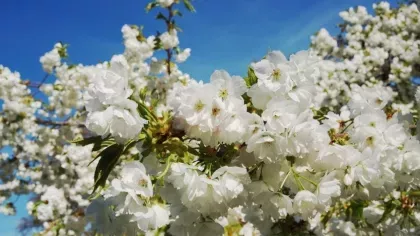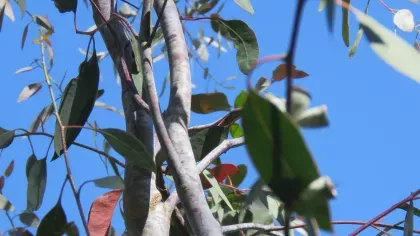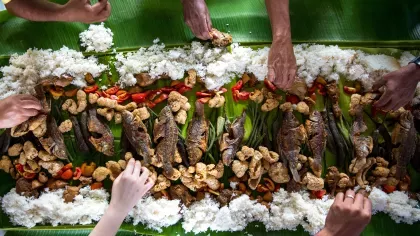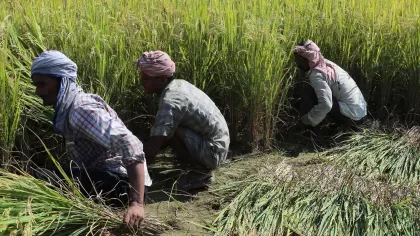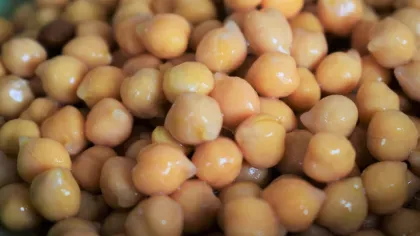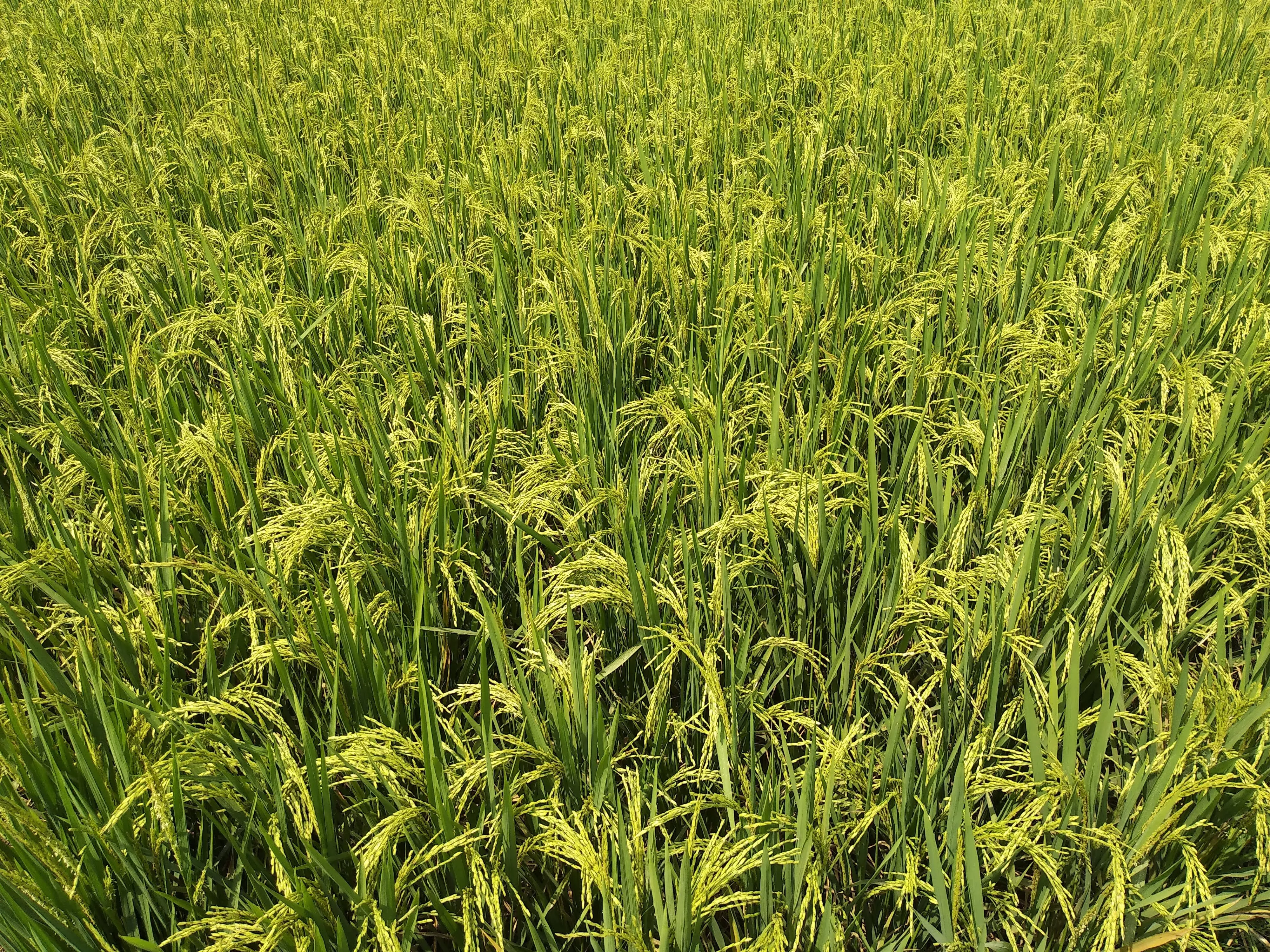
Asian rice
On this page
Rice is a staple food for billions of people worldwide.
More than just a plate filler, rice cultivation provides a livelihood for one fifth of the world’s population.
Asian rice is one of only two cultivated types of rice, along with African rice (Oryza glaberrima).
It is an extremely versatile plant that is used in countless dishes, medicines, cosmetics, and crafts.
Over 400 million tonnes of milled rice are produced each year.
Plant description
Asian rice is a grass which can grow to over a metre tall (between 90-150cm). Its upright stem is composed of a series of nodes from which slim leaves grow. The sheaths which enclose the base of the leaves are smooth and hairless. Rice grain grows on branch-like spikes that arch over.
Read the scientific profile on Asian rice
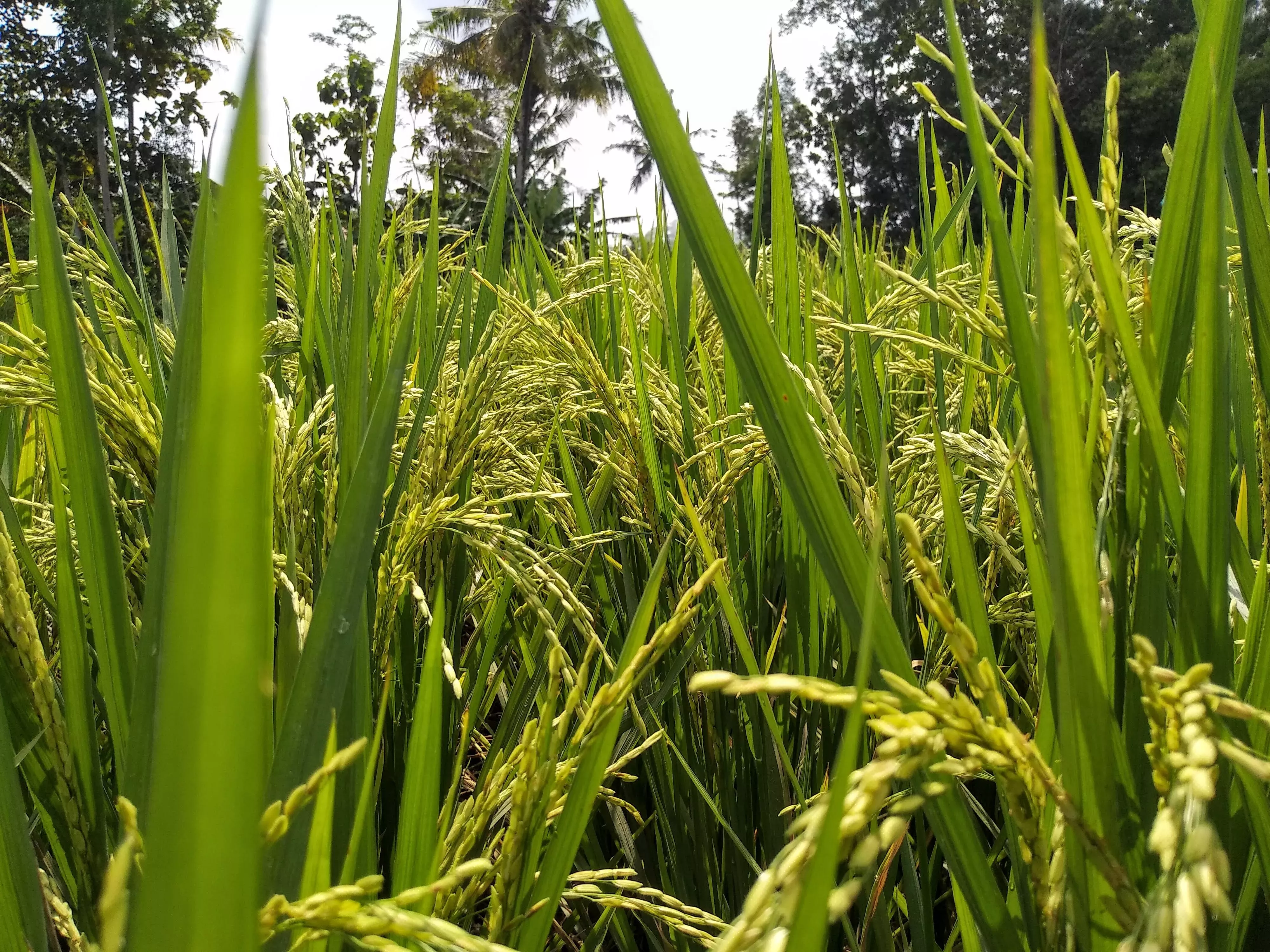
Plant uses
Beauty and cosmetics
Rice extracts are used in a range of cosmetic products.
Rice starch can be mixed with honey to moisturise skin and reduce facial shine.
Rice oil is used in sun-care products to protect hair and skin from UV-rays and is added to some conditioners and shampoos to help care for your hair and make it shiny. It is also reported to have moisturising and anti-ageing properties.
Extracts containing rice protein are another ingredient in hair products that give a feeling of volume and thickness to your hair.
Cultural
Rice is the bedrock of lots of people’s lives across many cultures.
In some cultures, rice is thrown at weddings. In other cultures, people worship the rice goddess, Dewi Sri.
Food and drink
Rice grain is eaten steamed, boiled, or fried, while rice flour lacks gluten and is usually consumed in noodles.
Rice starch is glutinous and can be used as a thickening agent for sauces and puddings. In eastern Asia, it can be found in snack foods such as rice crackers and cakes.
Rice oil is also used in cooking and the whole plant can be used to feed livestock.
Health
The medicinal properties of rice vary depending on the type used. Mainly brown rice, rice oil and rice bran are found in medicines.
Some studies have shown that rice products may have anti-cancer properties and the potential to treat diabetes, kidney stones and heart disease.
Rice bran contains up to 25% fibre, which can aid absorption of fats in the gut and digestion, as well as reduce levels of cholesterol and be used as a mild laxative.
Rice oil contains vitamin E which has antioxidant properties.
The good levels of fibre, protein, iron, and vitamin B in rice mean that it can play a vital role against malnutrition.
In traditional medicines, rice grain is applied to the skin to treat boils, sores, swellings, and blemishes, and sticky rice is used in remedies for stomach upsets, heartburn, and indigestion. Brown rice extracts have been used as remedies for breast and stomach cancer, as well as indigestion, nausea, and diarrhoea.
Materials and fuels
In some parts of the world, the husks and grains of rice are used for bedding, fuels, and building materials, and the oil is used as a leather finisher.
In India, rice straw is used in animal bedding and paper, and sometimes for rope and thatch.
Did you know?
Rice is known as 'dhanya' in India, meaning 'the sustainer of the human race'.
Rice can take up to 200 days to mature, and then is hand harvested from paddy fields.
The seeds of rice are milled to remove the outer husk and bran. The more it is milled, the ‘whiter’ the rice, but it loses some of its nutritious properties.
Techniques like parboiling, polishing, or puffing, turn rice into the different types you can buy.
There are tens of thousands of varieties of Asian rice, and two major subspecies: O. sativa ssp. indica and O. sativa ssp. japonica. Indica grows in tropical areas and produces long-grain rice, whilst Japonica grows in temperate areas and produces sticky, short-grained rice.
Whilst browsing the shelves of your local supermarket, you may spot packs of wild rice. Not directly related to Asian rice but a close cousin, wild rice is from North America and belongs to the genus Zizania.
Where in the world?
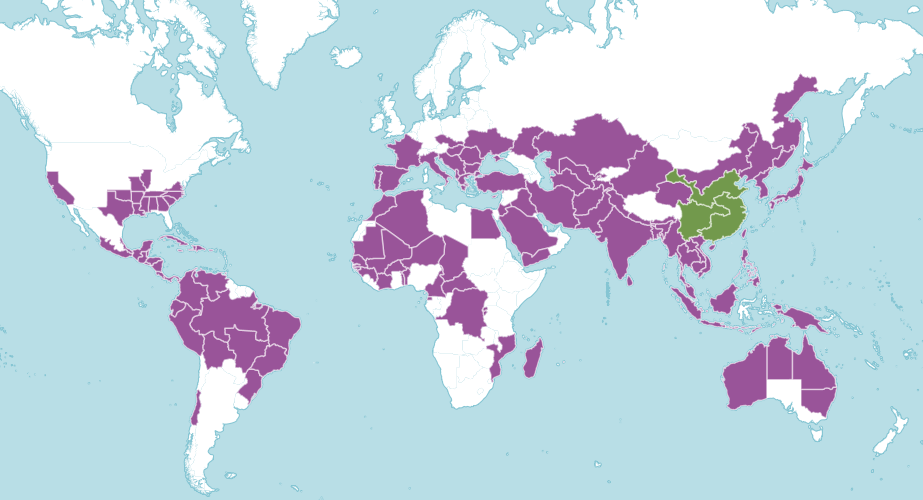
Warm, tropical areas where water is abundant like flood plains, wetlands, river valleys, ponds, and streams.
Find it in our gardens
Kew Gardens
A botanic garden in southwest London with the world’s most diverse living plant collection.
Location
View map of Kew GardensBest time to see
Our work
Rice is under threat from a changing climate: extreme temperatures can stress the plants or stop them growing at all, flooding can destroy the paddy fields, and an increase in humidity can lead to the spread of diseases.
Improper farming techniques like over-irrigation or misuse of insecticides also have a negative impact on rice production.
To secure the future of our food in a world with a growing population and changing climate, we need to protect the wild cousins of our commonly eaten and used plants, like rice.
These crop wild relatives are a source of valuable genetic diversity and useful traits which could help breeders develop new and improved crops that are more resilient to the impacts of climate change, like extreme temperatures, or pests and diseases.
Kew scientists have been working alongside the Global Crop Diversity Trust on a global project which has involved collecting seeds from the wild relatives of rice, and storing them in our Millennium Seed Bank to conserve them for future generations.
We made 241 collections of 12 Oryza species from 11 countries and carried out several IUCN Red List conservation assessments on plants collected as part of this project.
We are also collaborating with the International Rice Research Institute (IRRI) in the Philippines, who are working on crop wild relatives of rice that we sent them.
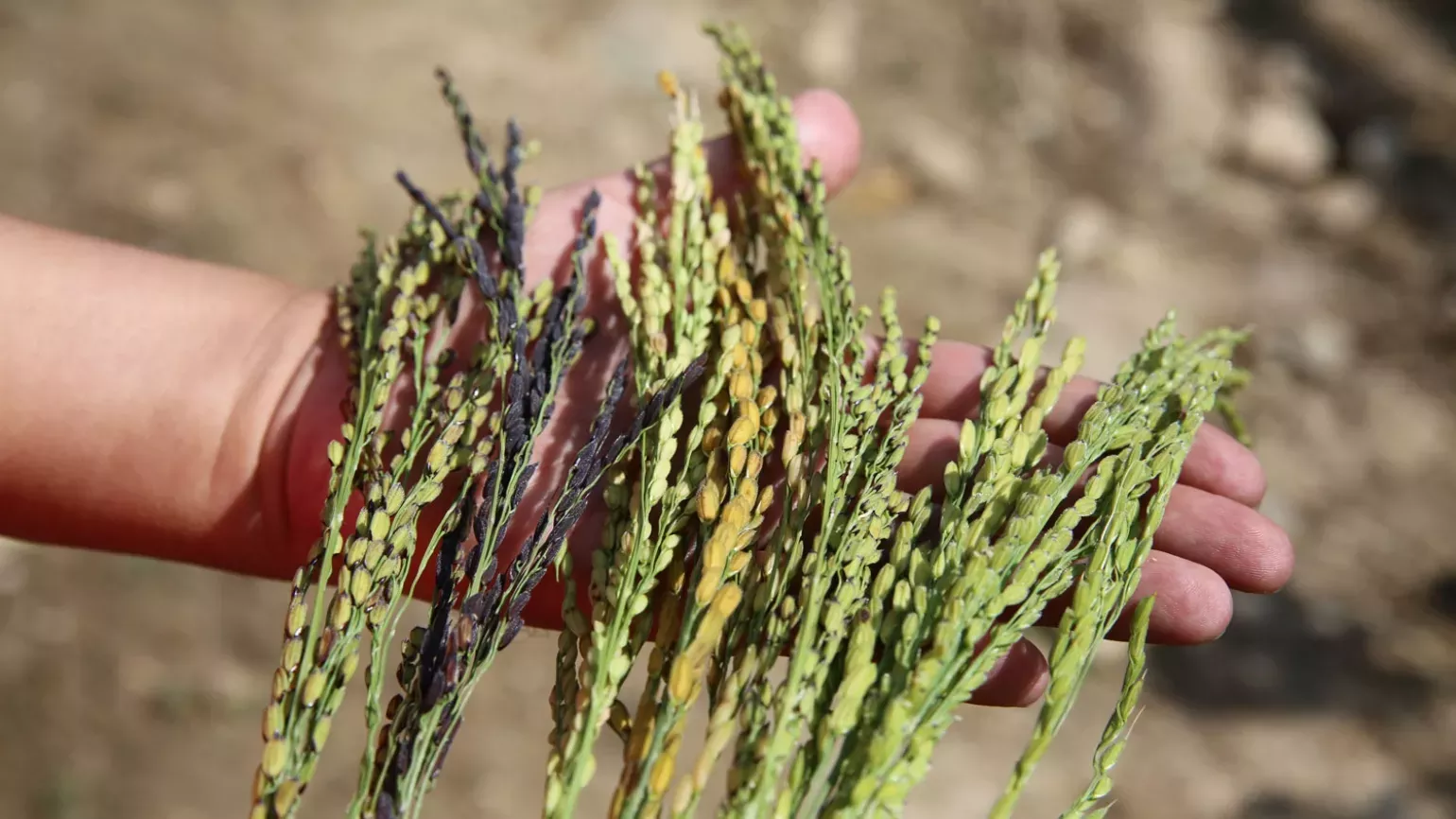
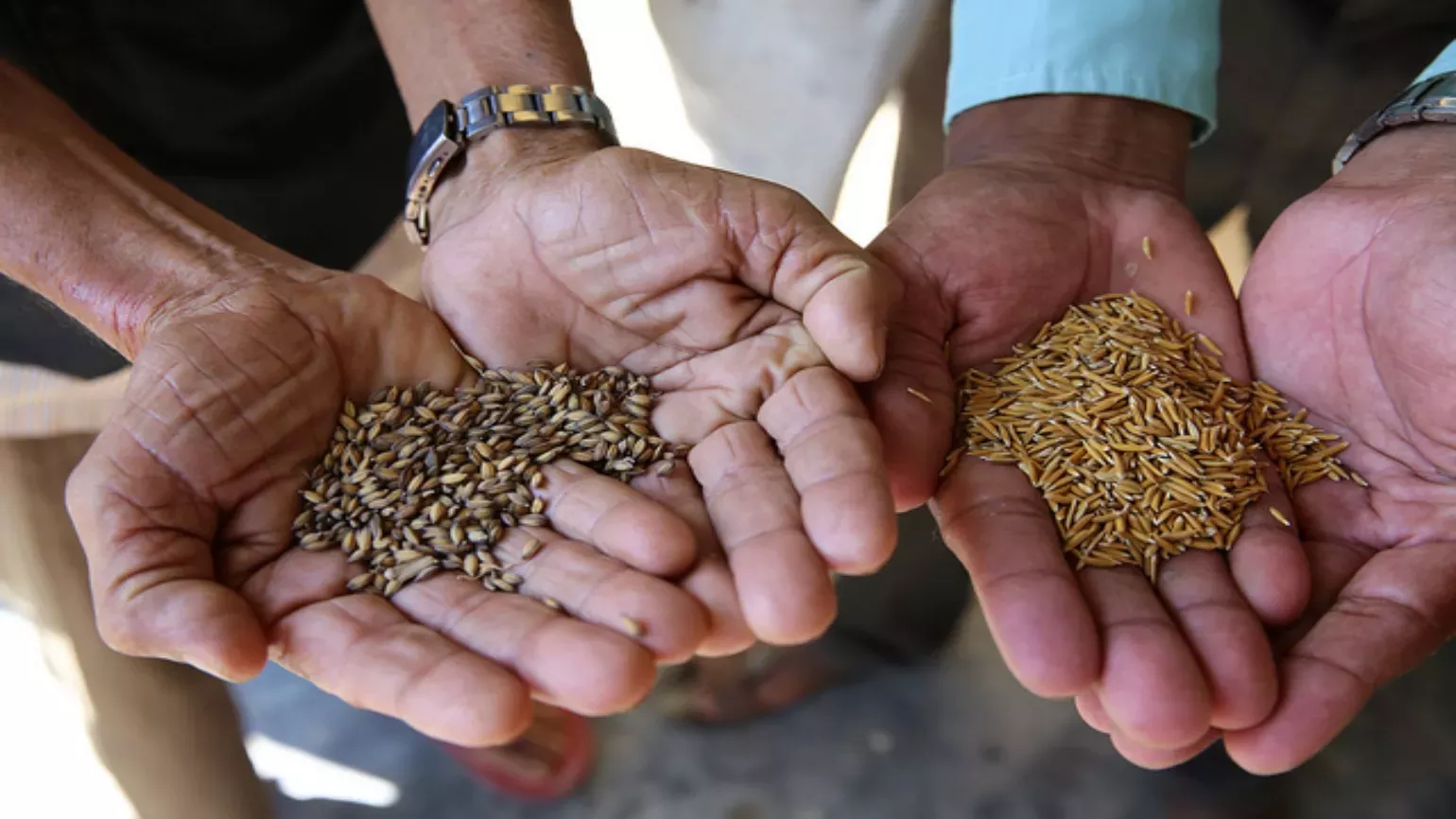
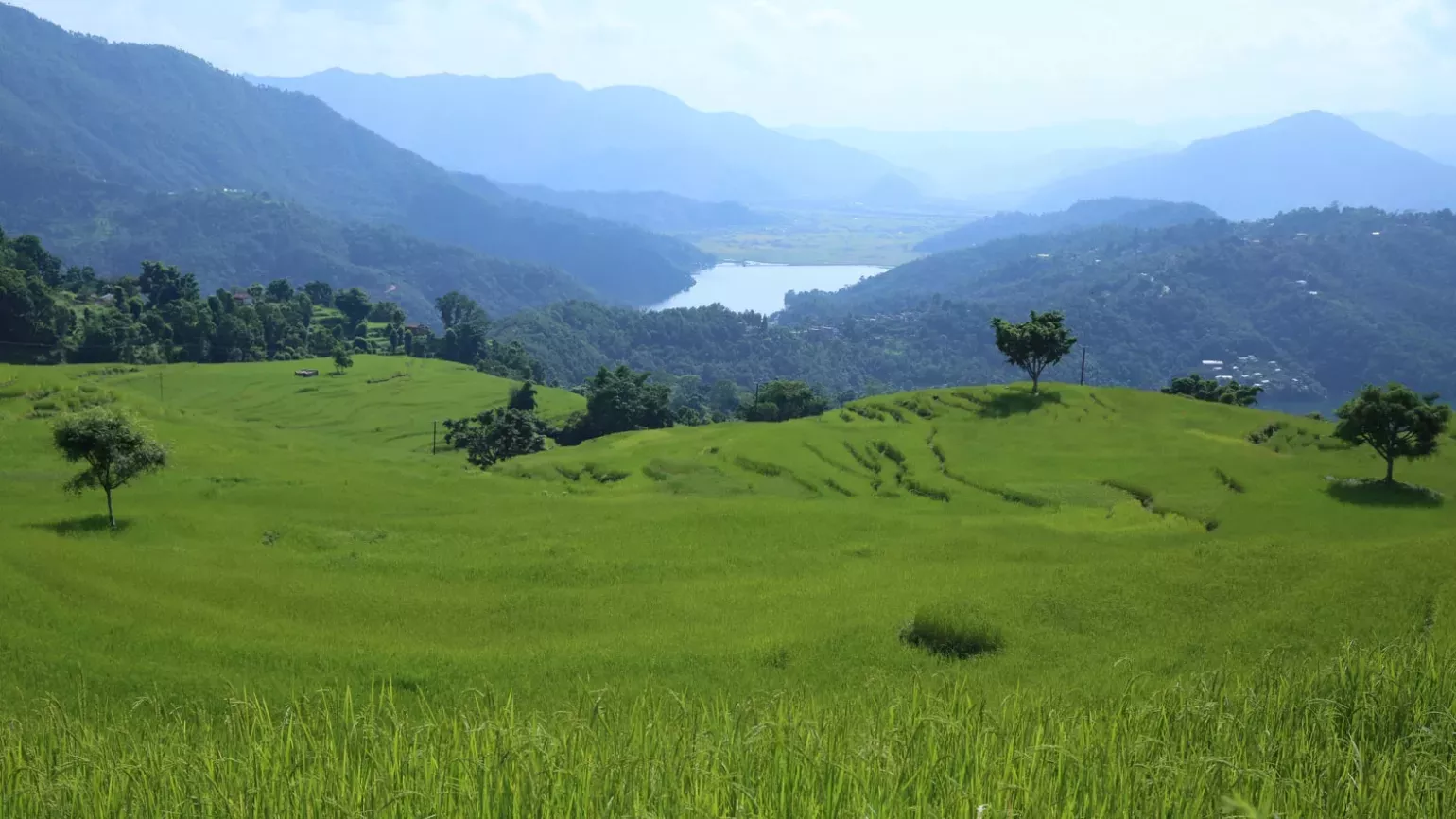
Alongside our science work on rice, our horticulturalists also grow it in the Gardens. Seeds are collected in August when they are brown and dry. They are cleaned (retaining the husk) and used within a year.
Behind the scenes in our Tropical Nursery, the seeds are sown mid-winter for our Waterlily House display that opens at the end of March.
They are sown into plug pots in loam with just a slight cover of loam over the seeds. The plug pots are rested in a tray of water placed in a tropical zone with a minimum temperature of 18°C, no bottom heat, and constant humidity (60 to 75 %). The seeds germinate within about a week.
Three weeks to a month after germination, the young rice plants are planted in loam in the Waterlily House. The corner beds which are the overflow for the pond are ideal as the rice plant likes its roots in water and here the loam is slightly submerged or levelled with water and stays saturated.
The young plants like a large amount of fertiliser – chicken manure pellets are either pushed into the compost or broken up into the water bath, or slow release fertiliser is used.
Fleece is placed over the seedlings if spider mites are known to be present in the glasshouse as young seedlings are particularly prone to attack by them.
